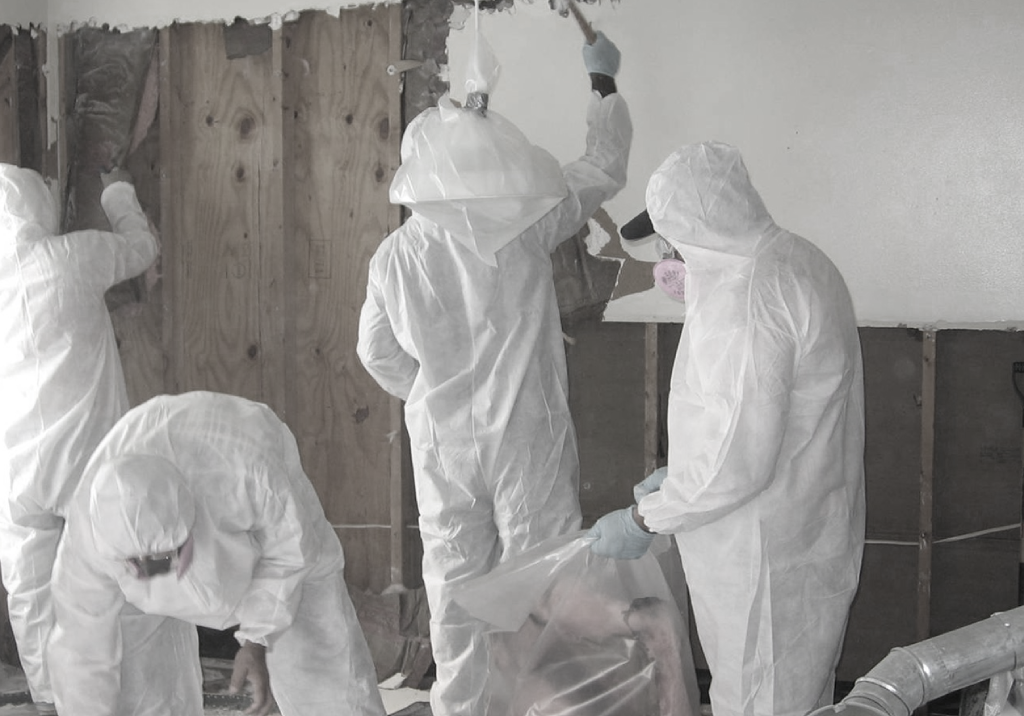Expert Biohazard Cleaning and Decontamination for Blood, Bodily Fluids, and Hazardous Materials
In the world of biohazard cleansing and purification for blood, bodily fluids, and unsafe products, accuracy and know-how are extremely important. The possible health and wellness risks related to direct exposure to biohazards emphasize the critical need for meticulous handling and detailed clean-up. Specialized training furnishes specialists with the understanding and skills necessary to resolve these harmful circumstances effectively. Nonetheless, it is not simply about tidying up; the value of using appropriate decontamination strategies can not be overstated. As we navigate the complex landscape of biohazard clean-up, recognizing the nuances of regulations, conformity, and the specific equipment at play comes to be crucial in guaranteeing a comprehensive and secure decontamination procedure.
Health Risks of Biohazard Exposure
Direct exposure to biohazards postures significant health threats that can result in serious repercussions for people and areas alike. Biohazards encompass a wide variety of organic substances, including blood, bodily fluids, mold, germs, infections, and various other possibly transmittable products. When people come right into call with these biohazards, whether through mishaps, incorrect handling, or ecological direct exposure, they encounter the threat of having severe health problems or illness.
Among the primary health and wellness dangers connected with biohazard exposure is the transmission of contagious diseases. Bloodborne pathogens such as HIV, hepatitis B and C, and various germs can be present in biohazardous products, posturing a straight danger to human wellness. Inhaling air-borne biohazards like mold spores or entering into call with infected surface areas can additionally cause breathing problems, allergies, and other adverse wellness results.
In addition, biohazard exposure can have long-term health effects, with some illness materializing years after the first get in touch with (Blood Cleanup). As a result, it is important to prioritize correct biohazard cleansing and decontamination to minimize these health and wellness risks and ensure the safety and security of areas and people

Specialized Educating for Biohazard Cleanup
When it pertains to handling biohazard clean-up successfully and safely, specialized training plays an essential duty in guaranteeing appropriate purification procedures are complied with. Biohazard cleaning needs details knowledge and skills to successfully minimize risks connected with bloodborne virus, physical liquids, and hazardous materials. Professionals trained in biohazard clean-up undertake strenuous instruction on how to safely manage, eliminate, and dispose of biohazardous materials to stop contamination and exposure.
Specialized training for biohazard cleaning covers a variety of essential subjects, consisting of correct personal safety equipment (PPE) use, bloodborne virus understanding, purification strategies, and hazardous waste disposal protocols. Individuals learnt biohazard cleanup are geared up with the required experience to analyze contamination levels, determine prospective risks, and execute suitable cleanup procedures in conformity with governing criteria.
Constant training and education are critical in the area of biohazard clean-up to stay updated on the current purification modern technologies, safety and security procedures, and policies. By investing in specialized training, biohazard cleaning specialists can effectively reply to emergency situation clean-up situations and safeguard both public health and the environment.
Relevance of Appropriate Decontamination Strategies
Using correct purification methods is crucial in biohazard cleaning to redirected here successfully eliminate unsafe products and minimize wellness dangers. Effective purification not only makes sure the removal of noticeable traces of blood, bodily liquids, and other biohazards yet also targets unseen virus that may posture major wellness risks otherwise correctly gotten rid of. By following rigid decontamination procedures, educated experts can considerably lower the risk of direct exposure to unsafe microorganisms, infections, and microorganisms that could cause infections or diseases.
Appropriate purification strategies involve using customized equipment and disinfectants that are particularly made to neutralize biohazards successfully. Thorough cleaning and sanitation of contaminated locations are crucial to prevent the spread of virus find out here and ensure a secure setting for passengers. Additionally, the correct disposal of biohazardous waste complying with decontamination treatments is vital in preventing contamination of other surface areas or individuals.

Tools and Devices for Safe Clean-up
When dealing with blood, physical fluids, or unsafe products, biohazard cleaning specialists rely on specialized equipment to minimize direct exposure threats and completely sanitize the affected location. In addition, biohazard cleaning sets containing disinfectants, absorbent products, and biohazard bags are used to safely have and dispose of contaminated products.
Advanced cleansing tools like hospital-grade disinfectants, HEPA-filtered vacuum cleaners, and misting equipments are used to sanitize surfaces and get rid of biohazards effectively. Specialized devices such as sharps containers and biohazard garbage disposal containers are utilized to safely handle sharp things and biohazardous waste products. By using the appropriate equipment and tools, biohazard cleaning experts can make certain a complete cleaning procedure that prioritizes safety and reduces health and wellness threats for both employees and passengers of the damaged room.
Rules and Conformity in Biohazard Cleaning
Proper adherence to regulations and compliance standards is critical in biohazard cleaning to make sure the security of both workers and the atmosphere. Government agencies such as OSHA (Occupational Safety and Health Administration) and the EPA (Epa) have actually developed details standards for biohazard cleaning treatments to lessen health and wellness dangers and environmental contamination. These laws cover a series of facets consisting of the handling, transportation, and disposal of biohazardous materials, as well as explanation the necessary training and safety tools needed for workers involved in the cleanup procedure.
Biohazard cleansing business need to stay up-to-date with these regulations to assure that their procedures meet the required safety and security requirements. Failure to adhere to these laws can lead to severe repercussions, including penalties, lawsuit, and jeopardizing the health and wellness of individuals and the setting. By complying with strict regulations and conformity steps, biohazard cleansing business can efficiently reduce risks and make certain a secure and extensive cleanup procedure for all parties entailed.
Conclusion
Finally, biohazard cleaning and purification require customized training, appropriate techniques, and adherence to laws. Exposure to blood, bodily fluids, and dangerous products positions substantial health and wellness threats, making it important to make use of the best devices and devices for risk-free cleaning. By following stringent methods and guidelines, professionals can successfully alleviate the threats associated with biohazard direct exposure and make certain the safety of both themselves and others.
As we navigate the detailed landscape of biohazard cleanup, comprehending the subtleties of laws, conformity, and the specialized devices at play becomes imperative in guaranteeing a secure and thorough purification procedure. (Blood Cleanup)
When it comes to taking care of biohazard cleanup efficiently and safely, specialized training plays an essential function in making sure correct decontamination procedures are complied with.Using appropriate purification methods is vital in biohazard cleaning to properly remove unsafe products and decrease health dangers. Furthermore, biohazard cleaning kits having disinfectants, absorbing materials, and biohazard bags are used to securely consist of and dispose of infected items.
Federal government agencies such as OSHA (Occupational Security and Wellness Management) and the EPA (Environmental Protection Firm) have actually developed particular standards for biohazard clean-up procedures to lessen health dangers and ecological contamination.